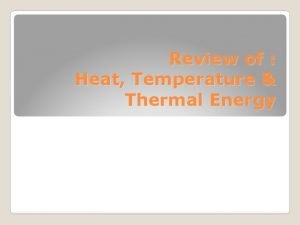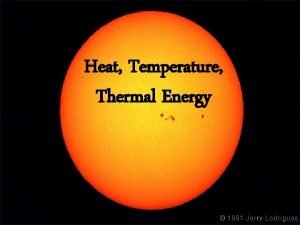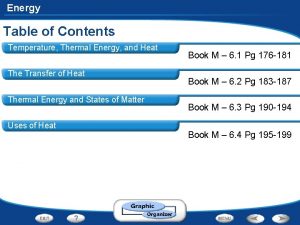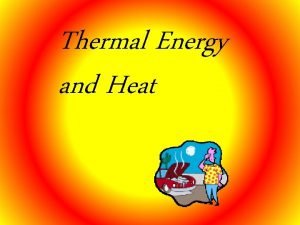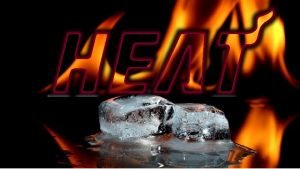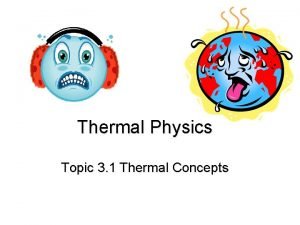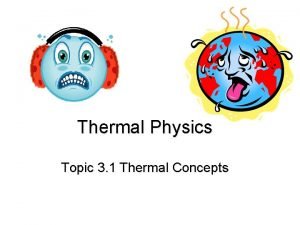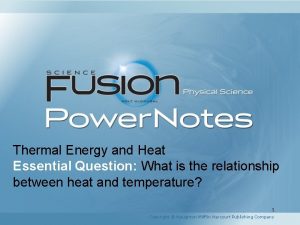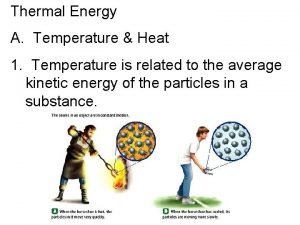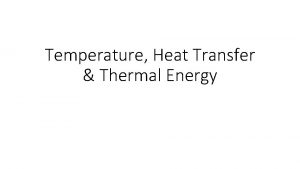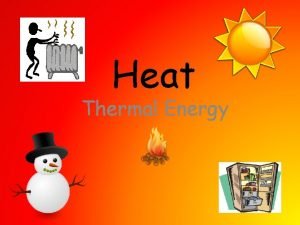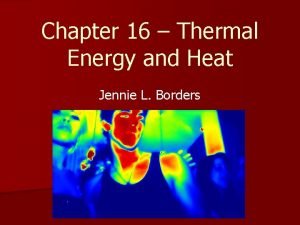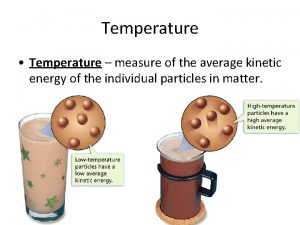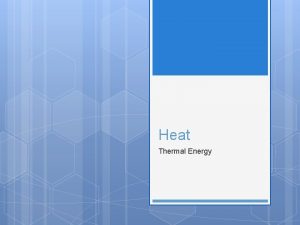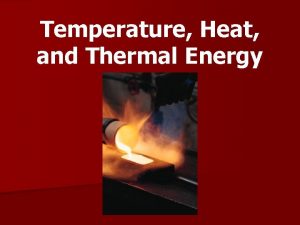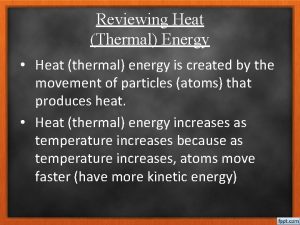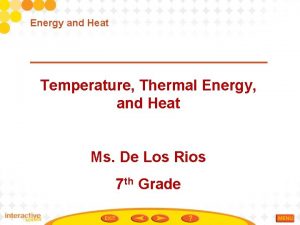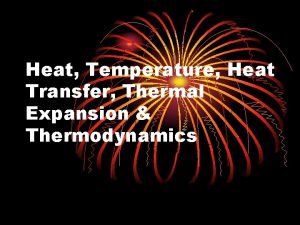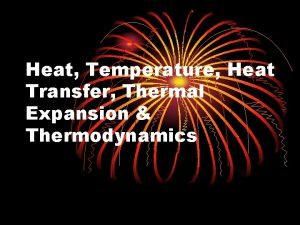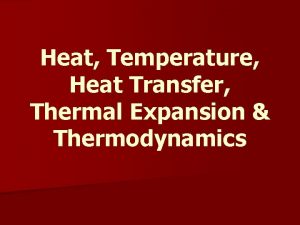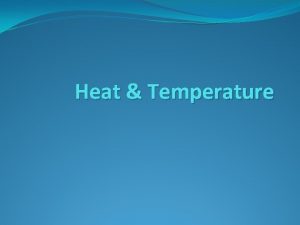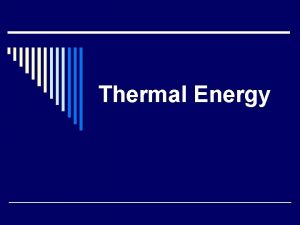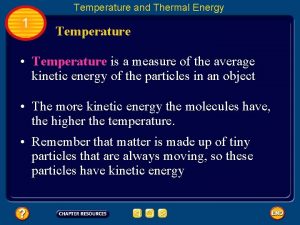Thermal Energy Heat Temperature Thermal Energy Heat Temperature

















- Slides: 17

Thermal Energy & Heat

Temperature, Thermal Energy, & Heat

Temperature • When think about temp. , scientists think about particles of matter in motion • Remember… ALL matter made up of particles – Particles always moving (even if matter they make up is not moving) – All particles of matter have kinetic energy • Faster particles move, more kinetic energy have • Temperature – measure of the average kinetic energy of the individual particles in matter


Measuring Temperature • Use thermometer – liquid (mercury or alcohol sealed on inside) – if tube heated, particles of liquid speed up & spread out so particles take up more space – If tube cooled, particles of liquid slow down & move closer taking up less space

Thermal Energy & Heat • • Remember…thermal energy is the total potential & kinetic energy of the particles (atoms) in an object Thermal energy of an object depends on… 1. # of particles in the object 2. Temp. of object 3. Arrangement of particles in object (solid, liquid, gas)

Heat • Defined as thermal energy that is transferred from matter at a higher temp. to matter at a lower temp. – Example – when holding an ice cube in your hand, the ice melts because thermal energy is transferred from your hand to the ice cube

The Transfer of Heat

How is Heat Transferred? • 3 ways heat can move – 1. conduction – 2. convection – 3. radiation

Conduction • Heat transferred from one particle of matter to another w/o the movement of matter – Example – metal spoon in pot of water on electric stove = fast moving particles in electric burner collide w/ slow moving particles in pot. Transfer of heat causes pot’s particles to move faster, then pot’s particles collide w/ particles in spoon. Particles move faster causing spoon to become hotter.

Convection • Heat transferred by the movement of currents within a fluid – Example – water at bottom of pot heated, particles move faster. Particles move farther apart causing heated water to become less dense. Heated water will rise in pot. Surrounding cooler water sinks into it’s place creating a circular motion called a convection current

Radiation • The transfer of energy by electromagnetic waves – Example – radiation from a fireplace can be felt across a room


Heat Moves One Way • If two objects have different temps, heat will flow from the warmer object to the colder one. • Heat will flow from one object to the other until the two objects have the same temp. Thermal equilibrium: The state in which all objects are at the same temperature.

Conductors & Insulators • Materials can be either a conductor or insulator – Conductors – transfer thermal energy well • Ex – silver, stainless steal, tile floor – Insulators – do not transfer thermal energy well • Ex – wood, wool, straw, paper, clothes, blankets

Thermal Expansion • Question… – Have you ever loosened a tight jar lid by holding it under a stream of hot water? Why does this work? • Because the metal lid expands a little • As thermal energy of matter increase, its particles spread out and the substance expands

• The expanding of matter when it is heated is called thermal expansion • When matter cooled, thermal energy released – Particles slow down and move closer together – As cools, matter contracts (decreases in volume The ball fits through the loop when cold, does not when hot.
 Heat thermal energy and temperature
Heat thermal energy and temperature Heat thermal energy and temperature
Heat thermal energy and temperature Temperature and heat
Temperature and heat Heat vs thermal energy vs temperature
Heat vs thermal energy vs temperature Thermal energy vs temperature
Thermal energy vs temperature Chapter 5 thermal energy answer key
Chapter 5 thermal energy answer key Thermal energy vs heat energy
Thermal energy vs heat energy Thermal energy vs temperature
Thermal energy vs temperature Thermal energy vs. temperature
Thermal energy vs. temperature What is the difference between thermal energy and heat?
What is the difference between thermal energy and heat? Specific heat capacity of lead j/kg c
Specific heat capacity of lead j/kg c Difference between heat and thermal energy
Difference between heat and thermal energy What is the difference between thermal energy and heat?
What is the difference between thermal energy and heat? Thermal vs heat energy
Thermal vs heat energy Heat vs thermal energy
Heat vs thermal energy Thermal energy vs heat
Thermal energy vs heat Chapter 16 thermal energy and heat
Chapter 16 thermal energy and heat Kinetic energy to thermal energy
Kinetic energy to thermal energy

